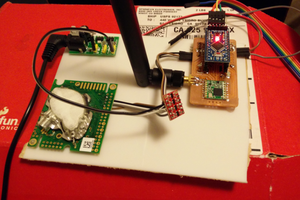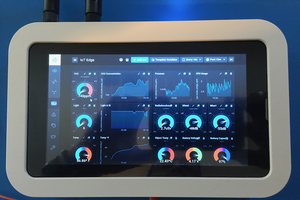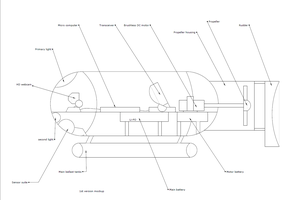Problem being addressed:
Adelaide is a city with limited access to water, and water wastage is an issue. In recent months there have been several water mains bursting, not only wasting a valuable resource but also disrupting roads and infrastructure.
Idea
Sensors can be placed over the whole water network, or strategically in places where known issues are occurring. Sensor data can then feed information to cloud data storage for further evaluation.
Connecting these sensors to the cloud creates a connectivity issue that needs to be solved and there are two possibilities, polling bluetooth devices or the device polling the cloud. What needs to be considered is how the data is to be collected, whether it is from cars travelling around or fed into an existing network, this document seeks to address both issues.
Our solution would be a hybrid of the following types of sensors:
Scan and collect:
This would involve using connected devices to passively collect data from the sensor modules spread around the monitoring network. This could be achieved with a variety of low power protocols, for example Bluetooth Low Energy (BLE). BLE data can be collected by specific devices, multi function devices and smartphones.
This also opens the option of allowing the general public to gather data with an App on their mobile phones and be appropriately compensated. Compensation could also be directed in other ways, such as to charity. Data collection for charity could also be gamified, encouraging data collectors to transmit data from local sensors and in turn regularly emailing the person collecting data with information about what change their donation has contributed to.
Fixed infrastructure:
This solution is the lowest power usage and takes advantage of pre-existing wireless infrastructure to actively upload sensor data. This needs minimal interaction, aside from maintenance.
Pros
- Collecting preemptive data in this way removes the need to disrupt customer supply outside of regular maintenance.
- Additional sensors can be added at customer.
Cons
- Environmental damage from destroyed or lost devices.
- Additional maintenance and tracking of sensors.
User experience
We would analyse the data in house (eg. via IBM Bluemix), combining pattern recognition and weather data to create regular reports as well as instant alerts. This could be done with a priority map and instant alerts via email or SMS; as per customer requirments.
App users may be asked for a bitcoin address or payment destination, and the app would run in the background collecting data and uploading that data to our servers.
Deployment
There are a few options for deployment:
- Dig a hole
- Use a small post hole digger to remove a layer of dirt and drop the sensor in the hole before covering it back up
- In drains
- Water meter
- With new water pipe installations
- Mounted on the bottom of an exposed water main
Challenges
Iot device: Power consumption (possible energy harvesting options for battery life), transmitter options (BLE & WiFi), prototyping, design for use in public spaces (max radiated power, tamper proof, environmental protection, replaceability)
Acquisition device: motivation for people to use app
Future
- Gas leakage sensors
- Other water providers
- Mining
- Water usage monitoring
- Farm sensors
 Marcus Berg
Marcus Berg

 Psyrax
Psyrax
 David G. Simmons
David G. Simmons
 wachyki
wachyki